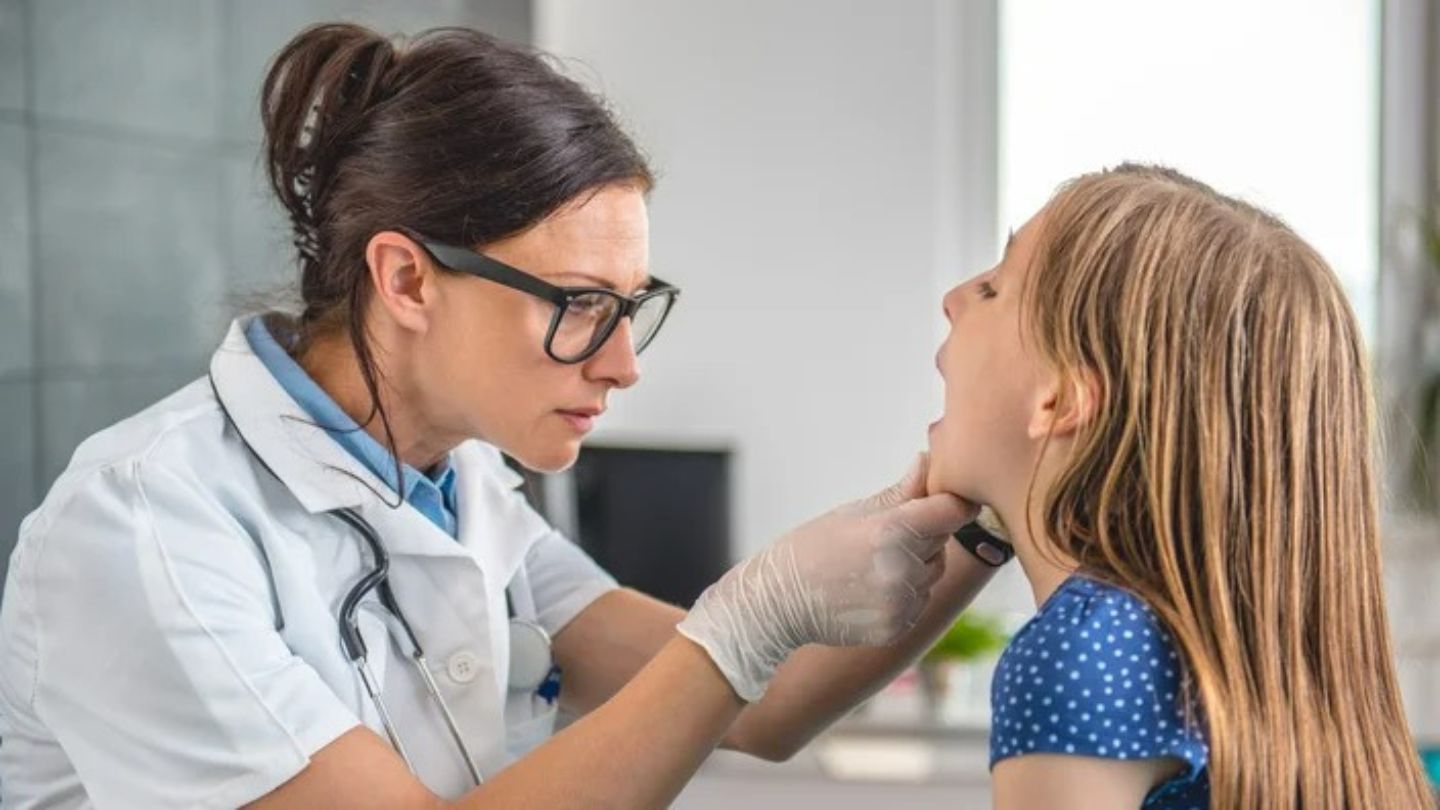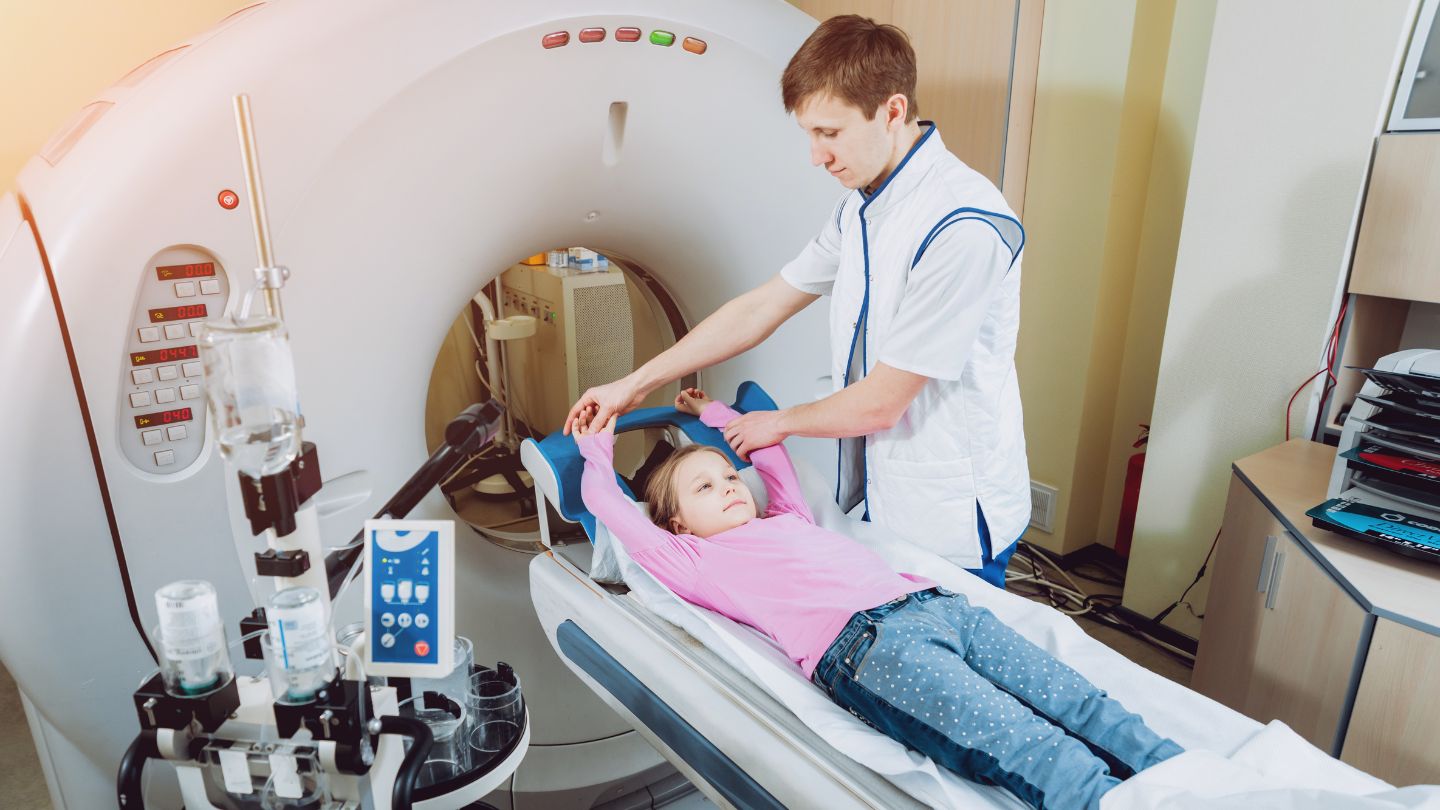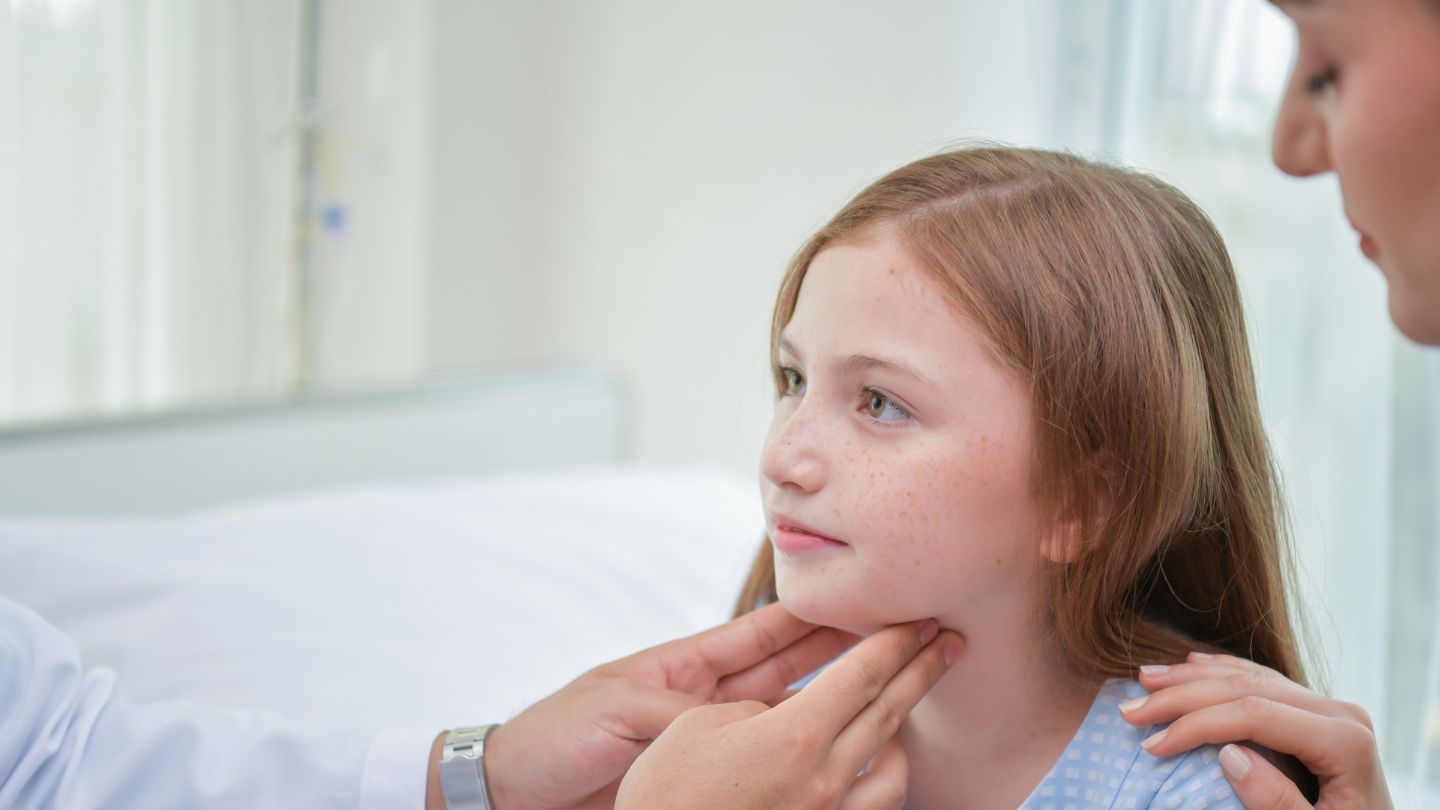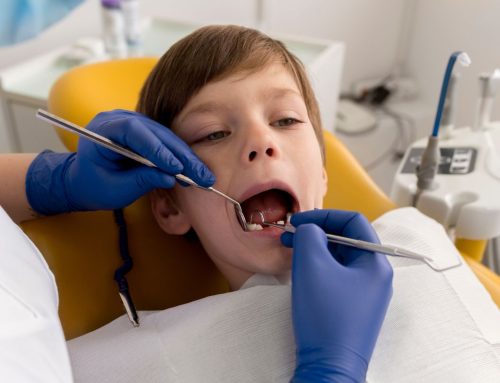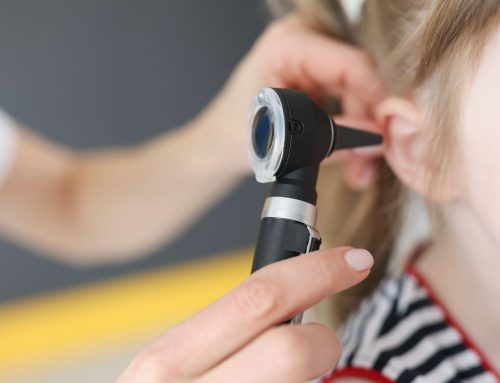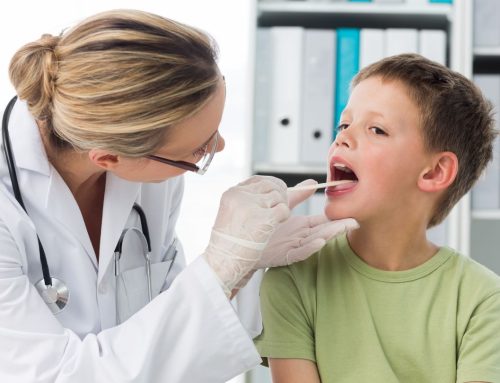Recognizing common signs of salivary gland malignancies in children early is vital for timely treatment. Look for persistent lumps under the jaw or behind the ear, facial asymmetry, and swelling. This blog provides detailed information on these symptoms and further guidance on next steps.
Key Takeaways
- Salivary gland malignancies in children are rare but significant, necessitating early detection for favorable prognosis.
- Common initial symptoms include painless lumps in the salivary gland area and facial asymmetry, which should prompt medical evaluation.
- A multidisciplinary approach to treatment is essential, combining various specialists to ensure comprehensive care and access to clinical trials.
Understanding Salivary Gland Malignancies in Children
Salivary gland malignancies in children are rare but significant conditions that occur in the tissues of the salivary glands. These malignancies account for a small fraction of pediatric cancers, with approximately 2,500 cases reported annually in the United States. Despite their rarity, salivary gland cancers occur, and knowledge of these tumors is vital for early detection and effective treatment.
The prognosis for children diagnosed with salivary gland cancer is generally favorable, particularly when the cancer is detected early and treated aggressively. Factors influencing the prognosis include whether the cancer has spread to the lymph nodes and the success of surgical tumor removal. Early diagnosis and a comprehensive treatment approach significantly impact the prognosis.
The salivary glands are responsible for saliva production, essential for digestion and oral health. There are three pairs of major salivary glands: the parotid glands, submandibular glands, and sublingual glands, along with the minor salivary glands. The majority of salivary gland tumors in children arise in the parotid gland, which is the largest salivary glands of these glands. Salivary glands produce saliva, identifying abnormalities in these glands is key to early intervention and successful treatment.
Initial Symptoms to Watch For
Recognizing initial symptoms is crucial for early detection of salivary gland malignancies. One of the most common early signs is the presence of a visible lump under the jaw, cheek, or behind the ear. This lump is often painless, but its persistence should raise concerns. A lump in the mouth region can also indicate a potential tumor in the salivary glands.
Facial asymmetry is another early warning sign that parents should be vigilant about. If one side of the face appears different from the other, it could be due to a swelling or mass in the salivary glands. Any lump persisting for more than two to three weeks should prompt a visit to an ENT specialist for further evaluation.
Though alarming, early intervention can significantly improve outcomes. Persistent or enlarging lumps in the salivary gland area require prompt medical attention. Even a painless lump or early symptoms of swollen glands can signal significant underlying issues needing medical attention.
Advanced Signs and Symptoms
As salivary gland malignancies progress, the symptoms can become more pronounced and severe. One of the advanced signs includes:
- Facial numbness or muscle weakness, which may result from nerve damage caused by the tumor.
- Drooping on one side of the face.
- Difficulty with facial movements, indicating that the tumor is affecting the facial nerves.
Persistent pain in the face pain, jaw, or ear area is another critical symptom to be aware of. Unlike common aches and pains that resolve on their own, this pain is persistent and does not go away. It can significantly impact a child’s daily activities, making it essential to seek medical evaluation if such symptoms are observed.
In advanced stages of salivary gland cancer, children may experience trouble swallowing food, known as dysphagia. This symptom can indicate that the tumor has grown large enough to interfere with the normal function of the throat and esophagus. Immediate medical care upon recognizing these advanced signs is crucial for disease management and prognosis improvement.
Diagnostic Procedures for Salivary Gland Cancer
Diagnosing salivary gland cancer begins with a thorough medical history and physical examination. The child’s doctor will look for salivary gland cancer signs, swelling, lumps, and other abnormalities in the head and neck region. A thorough physical exam helps diagnose salivary gland cancer and guides the next diagnostic steps.
Imaging tests are essential for diagnosing salivary gland tumors. CT scans and computerized axial tomography scans are commonly used to assess the extent of the tumor and any potential spread to other areas. These tests offer detailed images of the salivary glands and tissues, aiding in planning effective treatment strategies. Magnetic resonance imaging also assesses treatment effectiveness and checks for cancer recurrence.
A biopsy is critical for accurately diagnosing salivary gland cancer. The process typically involves:
- Performing an ultrasound-guided thin needle biopsy to obtain tissue samples from the tumor.
- Using a core needle biopsy to collect more tissue if the fine needle aspiration does not provide enough cells.
- Analyzing the samples by a pathologist, who performs specific tests to classify the type of salivary gland cancer.
The diagnostic process is comprehensive and involves multiple steps to ensure an accurate diagnosis. This comprehensive approach guides the treatment plan and enhances the likelihood of successful outcomes.
Types of Salivary Gland Tumors in Children
Salivary gland tumors in children can vary widely in their characteristics and behavior. The majority of these tumors arise in the parotid gland, which is one of the major salivary glands. Salivary gland tumors begin as either benign or malignant, with different types presenting unique challenges and treatment considerations.
Mucoepidermoid carcinoma is one of the most common malignant salivary gland tumors in children. It can present as low, intermediate, or high-grade tumors, each requiring a different treatment approach. Another type is acinic cell carcinoma, which is also malignant and can affect children. These tumors often require aggressive treatment to prevent recurrence and spread.
Newer types of most salivary gland tumors, such as mammary analogue secretory carcinoma (MASC), are increasingly recognized in pediatric populations. Additionally, sialoblastoma, typically benign, can appear as early as the neonatal stage and may require surgical intervention. Knowledge of the various types of salivary gland tumor assists in customizing the treatment plan for each child.
Risk Factors for Pediatric Salivary Gland Cancer
Various risk factors exist for pediatric salivary gland cancer. Sjogren’s syndrome, an autoimmune condition, significantly increases the risk of developing salivary gland tumors. Children with this condition should be monitored closely for any signs of salivary gland abnormalities.
Previous cancer treatments, especially chemotherapy and radiation, are linked to a higher risk of salivary gland tumors. Radiation exposure, particularly to the head and neck, is a known risk factor for head and neck cancers and neck cancer. This highlights the importance of careful monitoring and preventive measures for children who have undergone such treatments.
Knowledge of these risk factors aids in early detection and intervention. Parents and healthcare providers should be vigilant in monitoring children with these risk factors and seek medical advice if any symptoms of salivary gland malignancies are observed.
Treatment Options for Pediatric Patients
Treating salivary gland tumors in children requires a combination of approaches specific to the tumor type and stage:
- Surgery is often the preferred method, particularly for tumors that can be entirely removed.
- For benign tumors like sialoblastoma, surgical resection is typically sufficient.
- Neoadjuvant chemotherapy may be considered in some cases.
High-grade salivary gland cancers typically need both surgery and radiation therapy. Salivary gland cancer treatment involves managing invasive tumors and reducing the likelihood of post-surgery recurrence. Proton therapy, an advanced radiation form, minimizes acute toxicity compared to traditional methods.
Clinical trials explore emerging treatments like targeted therapy and new chemotherapy combinations for pediatric salivary gland cancer. Targeted therapies have shown promise, particularly for tumors with specific genetic fusions. While chemotherapy has not traditionally been highly effective, it can be combined with radiation for very high-grade cancers in a clinical trial. Additionally, ongoing research in cancer treatment aims to improve outcomes for patients.
Developing a treatment plan considers the child’s overall health, tumor status, treatment goals, and available options. This common treatment personalized approach ensures each child gets the most effective and suitable treatment.
Importance of Multidisciplinary Care
Managing pediatric salivary gland cancer requires a coordinated team of health care providers, including a pediatric oncologist. A multidisciplinary approach involves specialists from various fields, including:
- Oncologists
- Surgeons
- Radiologists
- Support staff working together to provide comprehensive care.
This collaboration enhances the management of complex cases and ensures that all aspects of the child’s health are addressed.
Pediatric cancer care centers often have access to clinical trials, which can offer new and innovative treatment options for young patients. These trials are essential for advancing the understanding and treatment of pediatric salivary gland cancers, as highlighted by the national cancer institute. The involvement of a multidisciplinary team ensures that each child receives the best possible care tailored to their unique needs.
Multidisciplinary care is of utmost importance. It provides a holistic approach to treatment, ensuring that children benefit from the expertise of various specialists and the latest advancements in medical research.
Follow-Up Care and Monitoring
Long-term follow-up is crucial for childhood cancer survivors, as they are at an elevated risk of secondary malignancies, including salivary gland cancers. Follow-up appointments are typically scheduled every three months during the first year after treatment to monitor the child’s recovery and detect any signs of recurrence early. The highest risk for recurrence generally occurs within the first two years post-treatment.
During follow-up visits, healthcare providers will perform physical exams, including checks on the surgical site, and may use imaging tests like computerized tomography, called computed tomography, or MRI scans to monitor for cancer recurrence. These follow up tests are essential for assessing side effects and ensuring that any new symptoms are promptly addressed.
Patients should report any new or worsening symptoms, such as lumps or pain, to their healthcare team immediately. Long-term follow-up is necessary as some types of salivary gland cancer, including recurrent salivary gland cancer, can recur many years after the initial treatment. This ongoing monitoring helps ensure that any recurrence is detected and treated early, improving the long-term outcomes for childhood cancer survivors.
Knowing when to take a child to an ENT is essential for their overall health. Signs such as chronic ear infections, frequent sore throats, hearing difficulties, or ongoing nasal congestion often indicate the need for specialized care. Recognizing these symptoms early ensures timely treatment and better outcomes for your child.
Final Thoughts
Recognizing salivary gland malignancies in children early is critical for improving outcomes. These rare tumors often present with subtle signs like painless lumps, facial asymmetry, or persistent swelling, making early detection and timely medical intervention essential. Comprehensive care, accurate diagnosis, and tailored treatment approaches significantly impact a child’s prognosis.
At Pediatric Ear Nose and Throat of Atlanta, P.C., we specialize in managing pediatric salivary gland tumors in Atlanta with advanced diagnostic tools and a multidisciplinary approach. Our team is committed to providing personalized care and access to innovative treatments, ensuring the best possible outcomes for every child. If you notice any concerning symptoms, contact us today for a thorough evaluation and expert guidance.
Frequently Asked Questions
What are the initial symptoms of salivary gland malignancies in children?
Initial symptoms of salivary gland malignancies in children often manifest as a visible lump under the jaw, cheek, or behind the ear, along with facial asymmetry and persistent lumps that do not resolve over two to three weeks. Early recognition of these signs is crucial for timely intervention.
How is salivary gland cancer diagnosed?
Salivary gland cancer is diagnosed through a comprehensive medical history review, physical examination, imaging tests like CT and MRI scans, and a biopsy to confirm cancer cell presence. This multi-faceted approach ensures accurate diagnosis and effective treatment planning.
What are the treatment options for pediatric salivary gland tumors?
The primary treatment options for pediatric salivary gland tumors consist of surgery, radiation therapy, and potentially targeted therapies or chemotherapy, with the selection of treatment tailored to the specific type and stage of the tumor.
What are the risk factors for developing salivary gland cancer in children?
The primary risk factors for developing salivary gland cancer in children are Sjogren’s syndrome, prior chemotherapy or radiation treatments, and exposure to radiation, especially in the head and neck region. These factors should be considered when assessing a child’s health history and risk profile.
Why is multidisciplinary care important for treating pediatric salivary gland cancer?
Multidisciplinary care is crucial for treating pediatric salivary gland cancer as it ensures a collaborative approach among various specialists, leading to comprehensive treatment plans and improved outcomes for young patients. This coordinated strategy enhances access to clinical trials and tailored therapies.

